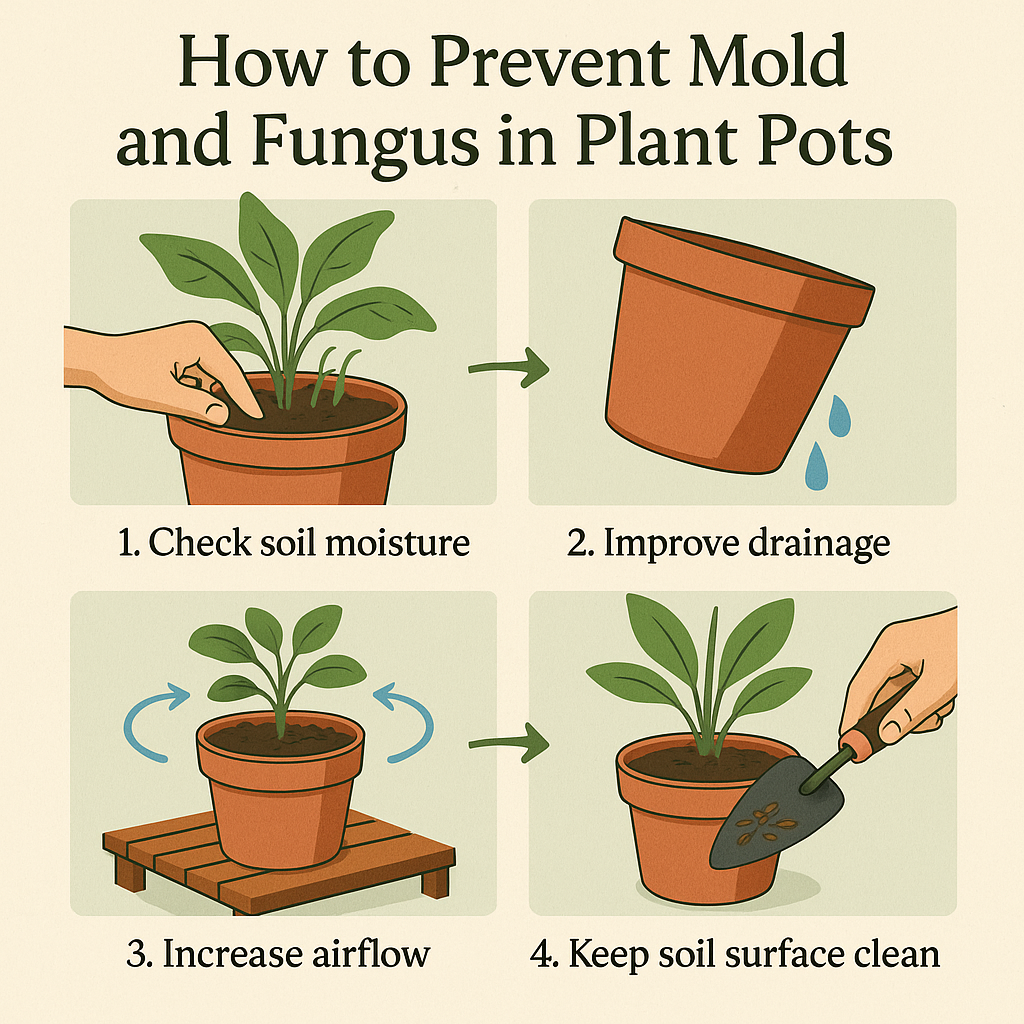If you’ve ever noticed a white film or fuzzy growth on your potting soil, you’re not alone. Learning how to prevent mold and fungus in plant pots is essential for maintaining healthy houseplants. This guide will show you why mold appears, how to stop it naturally, and how to keep your indoor plants thriving in a clean and safe environment.
Why Mold and Fungus Appear in Plant Pots
Mold and fungal growth are usually caused by:
- Overwatering
- Poor drainage
- Stagnant air
- Decomposing organic matter on the soil surface
- Lack of sunlight
While some mold is harmless, others can attract pests or indicate an unhealthy environment for your plants.
Signs of Mold or Fungal Growth
- White, fuzzy patches on soil surface
- Yellow or brown leaf spots
- Musty odor
- Sticky residue or black mold on leaves or stems
Early detection is key to keeping your plant healthy.
How to Prevent Mold and Fungus in Plant Pots
1. Avoid Overwatering
- Only water when the top 1–2 inches of soil are dry
- Use a moisture meter if needed
- Always empty saucers to prevent standing water
2. Improve Drainage
- Use pots with drainage holes
- Add perlite or sand to your potting mix
- Place a layer of pebbles at the bottom of pots
3. Increase Air Circulation
- Space plants out to allow airflow
- Use fans or open windows periodically
- Rotate plants to ensure even exposure
4. Add a Top Layer of Sand or Gravel
- This dries quickly and discourages mold on the surface
- Also improves the look of your pot
5. Sterilize Soil and Pots Before Use
- Use fresh, sterile potting mix
- Wash reused pots with a 1:10 bleach solution and rinse thoroughly
6. Don’t Let Organic Debris Accumulate
- Remove dead leaves or petals from the soil surface
- Keep the top layer clean to prevent decomposition
7. Give Your Plants Enough Light
- Most mold and fungus thrive in dark, damp conditions
- Move your plant to a brighter spot when possible

Natural Remedies to Control Mold
- Cinnamon powder: Natural antifungal—sprinkle on soil
- Neem oil: Safe and effective for leaf and soil treatment
- Hydrogen peroxide solution: 1 part peroxide to 4 parts water for soil drench
- Baking soda spray: Controls leaf mold and mildew
When to Repot
If mold persists despite changes in care:
- Remove the plant
- Discard moldy soil
- Wash the pot and replant with fresh mix
- Trim any affected roots or leaves
For more indoor gardening tips, check out our guide on How to Grow Lettuce at Home in Small Spaces.
Final Thoughts
Understanding how to prevent mold and fungus in plant pots is an important part of plant care—especially in humid or low-light environments. With just a few adjustments to your watering habits, light exposure, and soil maintenance, you can keep your plants healthy, vibrant, and mold-free.
To improve drainage and reduce mold risk, consider adding perlite to your potting mix. You can find high-quality perlite here on Amazon.
